| Forest Hill Property Guide |
Regency Era |
Honor Oak Road |
Honor Oak Rise |
London Road |
|---|---|---|---|
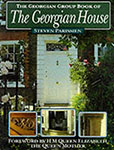 |
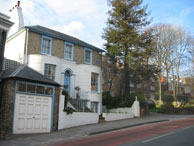 |
 |
 |
We have highlighted some of the best Georgian & Regency roads in Forest Hill & Honor Oak for period properties to rent or buy. The Georgian period ran from 1715 to 1811. The Regency era ran from 1811 when the Prince Regent took over until 1836 when William IV died. |
map |
map |
map London Road is part of the South Circular Road with attendant heavy traffic. Previously known as Forest Hill Road. Despite that it has a fine range of period housing with South side - mid C19 classical terraces on the South side leading up to the well-loved Horniman Museum and Gardens |
Victorian Era |
Devonshire Road |
Manor Mount |
Round-Up |
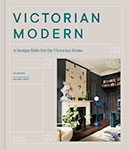 |
 |
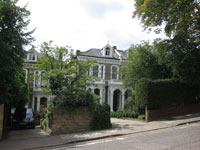 |
|
The Victorian period ran from 1837 to 1901. From 1860s onwards the new railway stations led to further expansion. The Gothic style was in fashion plus Italianate villas. |
map It runs by the railway and in-between is the Devonshire Road nature reserve. Mostly Victorian architecture. Desmond Dekker in Devonshire Road in the C20. |
map |
Stanstead Road
|
Late Vict. /Edwardian Era |
Ballina Street |
Corrington Hill |
Gabriel Street |
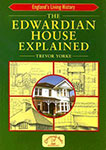 |
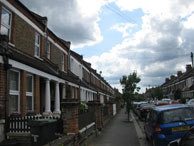 |
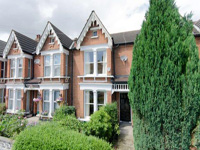 |
 |
This period covered 1895 to 1914 and featured the Arts & Crafts Style begun in Britain. Mansion blocks of flats began to appear to cater for London’s growing population. |
map Quiet road with late Victorian/Edwardian terraces. Presumably named after the town in County Mayo, Ireland. |
map |
Victorian properties with differing styles. The comedian Spike Milligan lived at No 22 from 1933. |
Cibber Road |
Colfe Road |
Hackford Road |
Farren Road |
 |
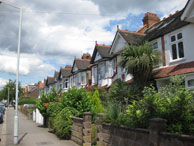 |
 |
 |
| map After Colley Cibber (1671-1757) a comedian and playwright. |
map
|
map |
map
|
| Kemble Road | Kilmorie Road | Siddons Road | Vestrie Road |
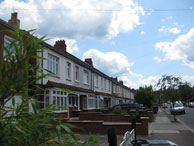 |
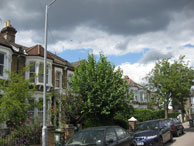 |
 |
 |
| map Named after Roger Kemble (1723-1802) an actor-manager |
map Links Stantead Road and Woolstone Road. It appears to follow a footpath on this 1862 map |
Map After the famous actress Sarah Siddons (1755-1831). She was the daughter of Roger Kemble (see Kemble Road) |
Map Lucia Bartalozzi (1797-1856) was a famous singer, She married Auguste Vestris in 1813. |
Woolstone Road |
Perry Vale | Westbourne Drive |
Riseldine Road |
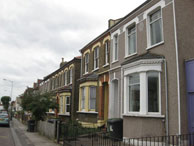 |
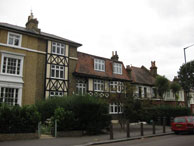 |
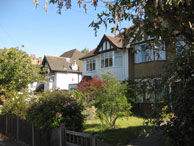 |
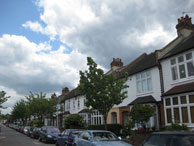 |
Map |
map Perry Vale is an old road linking Forest Hill with Catford. It was developed heavily after the railway arrived in the Nineteenth Century. Good examples of Edwardian housing and C20 flats at Valentine Court. Tree-lined. Probably after local pear orchards. |
Map |
Map |
Postwar Era |
Horniman Drive | Ringmore Rise | Liphook Crescent |
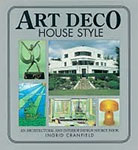 |
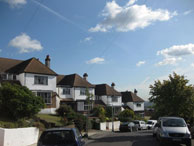 |
 |
 |
The postwar era saw the development of modern flats including high rise flats. |
map Horniman Drive has exceptionally views of both London and Kent. Mostly Thirties development with several good examples of Modernist/Deco styling. Key property: No 30 Welcome Aboard (1932) by Robert Atkinson and Partners designers of the Daily Express foyer in Fleet Street). |
Map |
map |
| Taymount Rise | Tewkesbury Avenue | Westwood Park | More SE23 Guides |
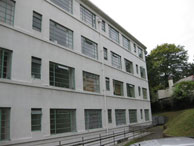 |
 |
 |
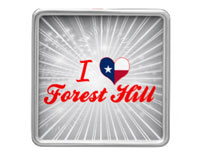 |
| Map Taymount Rise was called Queens Road until the late 1930s when the name was changed to avoid confusion with the many other Queens Roads in London. Taymount, after which the road was named, was a large Victorian house on the site of Taymount Grange. It was demolished in the early 1930s. Key properties:Taymount Grange (1935) by George Bertram Carter. Many of the flats had a small apartment one for a servant. There was also a restaurant, lounge and "guest rooms". Outside there were seven tennis courts, a swimming pool and a putting green. Forest Croft (1936) by Arnold Andre Higuer, on a site previously occupied by The Mount. |
Map Built in the 1930s on the site of Tewkesbury Lodge. |
Map Westwood Park runs down Forest Hill to the Dulwich border with fine views of London.Mostly 1930s semi-detached houses. |
Best Forest Hill roads
Honor Oak Park
Honor Oak Road
Horniman Drive
London Road
Perry Vale
Stanstead Road
Sunderland Road
Taymount Rise
Westbourne Drive
Westwood Park
